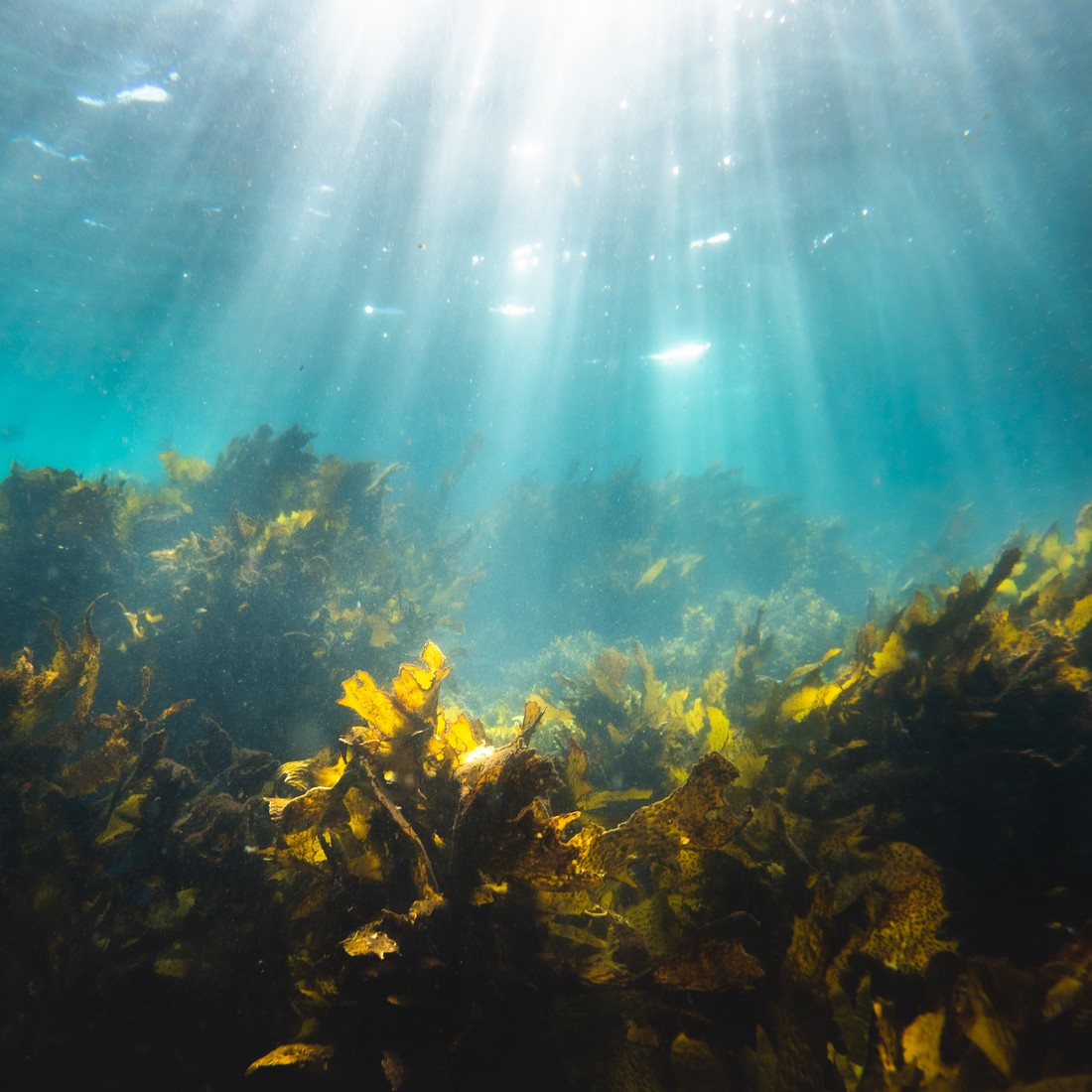Marine plant life has a significant role to play in tackling climate change
The Earth’s changing climate has been deemed the most significant crisis of a generation, and for good reason. According to NASA, carbon dioxide from human activity is increasing more than 250 times faster from human intervention than it did from natural sources after the last Ice Age. Not only that, but the planet’s average surface temperature has risen by 1.18 degrees Celsius since the late 19th century. This is primarily due to increased carbon dioxide emissions. 2016 and 2020 are tied for the warmest years on record.[1]
Because the climate crisis has become so serious, experts are continually looking for ways we can fight against these trends and help the planet heal. It may come as a surprise to some (though maybe not if you’re a regular reader of our blog) that seaweed is one of the most important weapons in the fight against climate change.
Kelp and carbon

Kelp is one of the better-known species of seaweed and, in fact, there are many different species beneath the ‘kelp’ umbrella term. Kelp can be found growing in forests of long ribbons all along the coastlines, creating dense underwater environments. These colossal seaweeds are known for growing at phenomenal rates, with one species growing by as much as 60cm per day.
In order to fuel their growth, kelps absorb huge volumes of carbon. It is estimated that kelp soaks up as much as 600 million tonnes of carbon every year,[2] which is more than double the yearly emissions produced in the UK. A kelp forest can absorb as much as 20 times more carbon dioxide from the atmosphere than the same area of forest on land.
Seaweed works in the same way as land plants
Although it may float in the sea, seaweed functions in very much the same way as trees and plants on land in the way that it takes in carbon dioxide and produces oxygen as part of photosynthesis. In fact, research shows that seaweed is responsible for producing around 70% of the total oxygen on Earth.[3] Seaweed also plays a crucial role in the broader marine ecosystem, housing fish, invertebrates, marine mammals and more.
As part of photosynthesis, seaweed turns carbon dioxide into biomass as part of the process known as carbon sequestration. Indeed, it is this process that helps seaweed grow at such a rapid rate.
Seaweed farms can help fight climate change
In addition to its capabilities in capturing carbon from the atmosphere, seaweed also offers a number of other benefits to its environment, such as:
- Acting as a valuable buffer against the acidification of the ocean
- Dampening wave action and reducing coastal erosion (a particularly helpful role in areas where human populations live close to the sea)
- Cleaning waterways by absorbing excess nutrients from wastewater
The carbon sequestration process means that once carbon dioxide is locked in the seaweed biomass, it can be harvested for use or stored underground where it cannot impact the climate. In the fight to tackle global warming, scientists have been increasingly exploring the potential of carbon sequestration in protecting our environment.[4]
Organic seaweed farms can support the fight against climate change; ramping up seaweed aquaculture to capture carbon dioxide and substantially reduce emissions.
The benefits of seaweed stretch from sea to store
Seaweed isn’t just useful in the ocean either. It’s increasingly being eaten by people all over the world thanks to that fact that it is rich in proteins, vitamins and essential nutrients like iodine. It’s also used in cosmetics, pharmaceuticals, livestock feed and fertilizer.[5] Clearly, we have good reason for calling seaweed a miracle plant.
At Weed & Wonderful®, we sustainably wild harvest our seaweed from the pristine waters of the Scottish Outer Hebrides. Just one 500mg capsule contains as much iodine as three whole mackerel, allowing it to support your thyroid health, metabolism, cognitive function, nervous system, skin maintenance and more.

